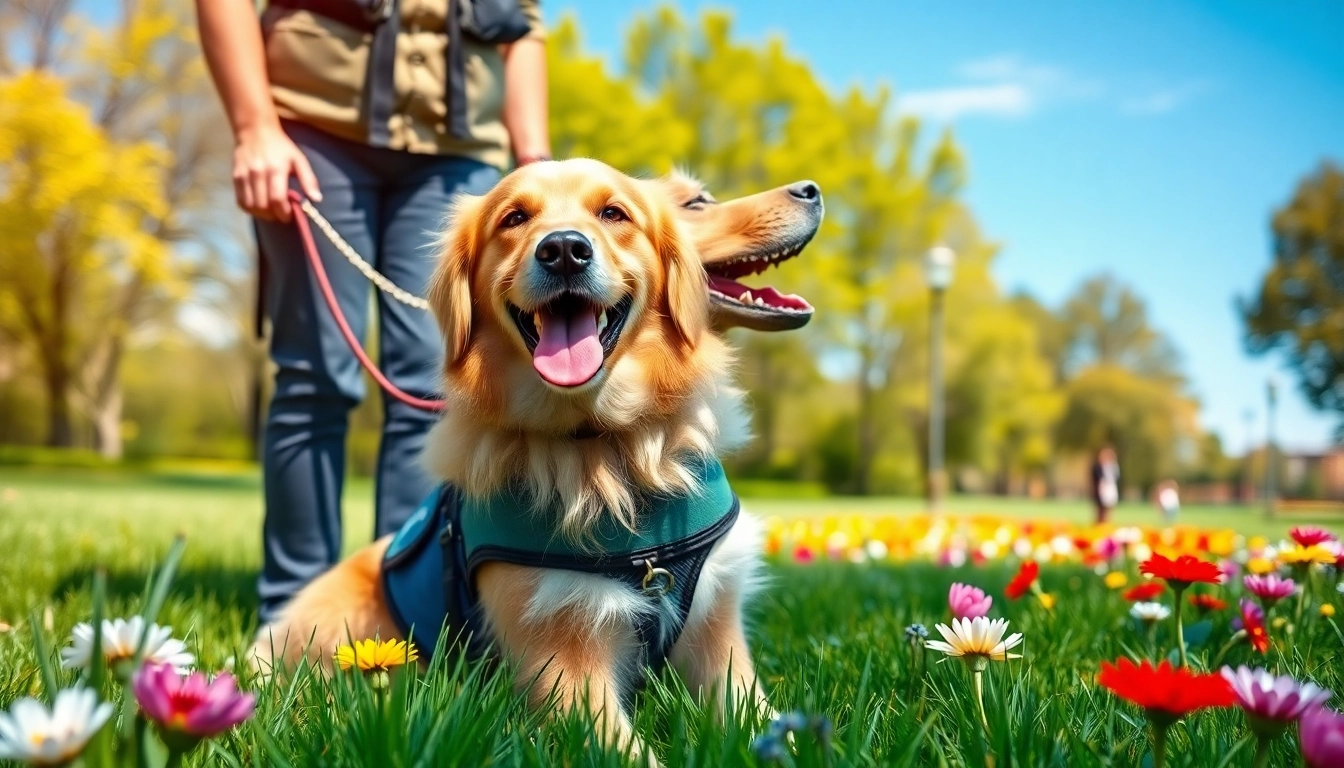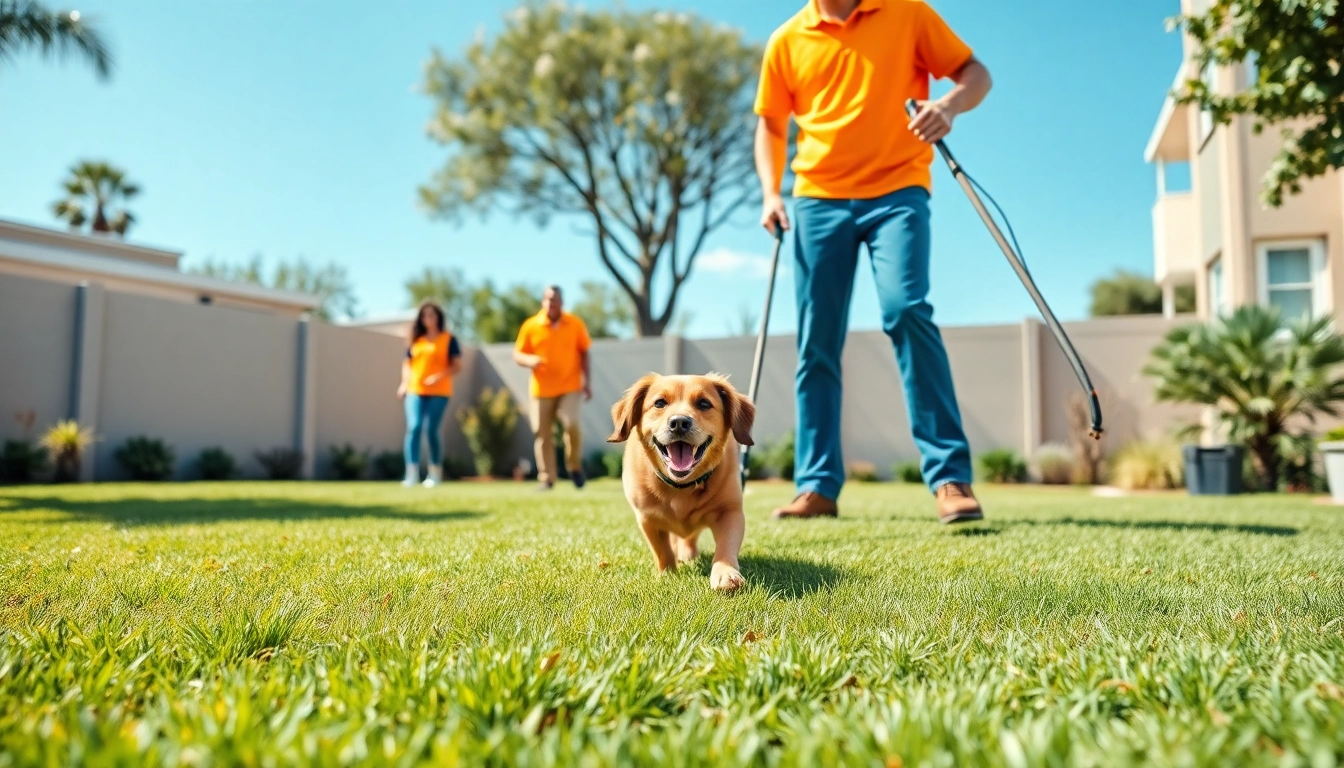Understanding Service Dogs: What You Need to Know
Definition and Purpose of Service Dogs
Service dogs are specially trained animals that assist individuals with disabilities by performing specific tasks to mitigate their handler’s condition. Unlike emotional support animals or therapy dogs, service dogs are trained to complete tasks that directly assist their owners in navigating daily life. These tasks can range from guiding individuals with visual impairments to alerting people with hearing loss to sounds. The primary purpose of service dogs is to enhance the quality of life for their handlers, granting them more independence and confidence.
Different Types of Service Dogs
Service dogs come in various types, each catering to specific needs. Here are some prevalent categories:
- Guide Dogs: Specially trained to assist individuals with visual impairments by navigating obstacles.
- Hearing Dogs: Alert individuals with hearing loss to important sounds such as alarms or a person calling their name.
- Mobility Assistance Dogs: Help handlers with physical disabilities by retrieving items, opening doors, or providing balance support.
- Medical Alert Dogs: Trained to recognize medical conditions, such as diabetes or seizures, and alert the owner or medical personnel.
- Psychiatric Service Dogs: Assist individuals with mental health conditions by performing tasks that alleviate symptoms, such as reminding the handler to take medication or interrupting anxiety attacks.
- Autism Support Dogs: Assist children with autism by providing comfort and grounding during overwhelming situations.
Legal Rights and Regulations Regarding Service Dogs
In the United States, service dogs are protected under the Americans with Disabilities Act (ADA). This law allows individuals with disabilities to be accompanied by their service dogs in all public places. These regulations ensure that service dogs are viewed as working animals, not pets, which grants them access to areas where other animals may not be allowed. However, it is essential to note that not all dogs trained to assist with disabilities are recognized as service dogs under the law; the training must follow specific criteria mentioned in ADA guidelines.
How to Buy a Service Dog: Step-by-Step Process
Assessing Your Needs for a Service Dog
Before trying to buy a service dog, it’s crucial to assess your individual needs. Determine the specific tasks you would need a dog to perform and how these tasks relate to your disability. Consulting with professionals in the field, such as therapists or medical professionals experienced with service animal training, can provide insight. Assessing factors such as your living environment, lifestyle, and how a dog might fit into your daily routine will help in selecting the right type of service dog for you.
Finding Ethical Sources to Buy a Service Dog
When you decide to buy a service dog, it is essential to seek out ethical and reputable sources. This can include contacting organizations dedicated to service dogs or considering breeders known for their ethical practices. Look for organizations that have a clear mission statement, provide transparency about their training processes, and prioritize the health and well-being of their dogs.
Evaluating the Training and Certification of Service Dogs
Once potential sources are identified, evaluate the training and certification of the service dogs they provide. A qualified service dog should have completed extensive training that includes specific tasks pertinent to the handler’s disability. Certifications from recognized organizations can also serve as indicators of the dog’s training background. Request to observe the dogs in both controlled environments and real-world settings to assess their behavior and responsiveness to commands.
Financial Considerations When You Buy a Service Dog
Understanding the Costs Involved
Buying a service dog can involve significant financial investment. The cost of acquiring a trained service dog typically ranges between $15,000 to $30,000, depending on the dog’s training, breed, and the organization you are working with. In addition to the initial purchase price, consider other expenses such as veterinary care, food, supplies, and ongoing training that may be required to keep the dog’s skills sharp.
Funding Options and Financial Assistance
Many individuals seek financial assistance or funding options when buying a service dog. Some organizations offer scholarships or grants to help offset the cost. Additionally, personal financing, pet insurance, or local charitable organizations may assist in financial matters. When discussing financial options, don’t hesitate to inquire about payment plans that some organizations may offer.
Budgeting for Ongoing Care and Training
Beyond the initial investment, ongoing costs associated with a service dog should be carefully budgeted. Routine veterinary check-ups, vaccinations, grooming, food, and continued training are just a few of the ongoing expenses. Setting aside a monthly budget can help manage these costs effectively.
Training Your Service Dog: Best Practices
Finding Qualified Trainers and Programs
Effective training is crucial for the success of a service dog. When looking for trainers, search for professionals certified by reputable organizations. These trainers should have experience working with your specific type of service dog. Research training programs that incorporate positive reinforcement techniques, as a collaborative approach is generally more effective.
Your Role in Reinforcing Training
After acquiring a service dog, your engagement in reinforcing training is vital for their development. Consistent practice of commands and positive reinforcement during training sessions will help strengthen the bond between you and your dog. Utilize treats, praise, and playtime to encourage desired behaviors and responses.
Socialization and Public Access Training
A well-socialized service dog is more likely to succeed in various environments. Introduce your service dog to different settings, people, and other animals gradually and positively. Public access training should aim to prepare your dog for diverse situations, such as busy streets, crowded shopping areas, and social gatherings, ensuring they remain calm and focused amidst distractions.
Living with a Service Dog: Tips for Success
Integrating a Service Dog into Your Lifestyle
Integrating a service dog into your day-to-day life requires patience and thoughtful adjustments. Work together with your dog to establish a routine that incorporates their needs for exercise, mental stimulation, and training. Create a comfortable space in your home for your service dog to relax and feel secure, ensuring they can recharge after their working hours.
Managing Public Interactions and Etiquette
When in public, it’s essential to manage interactions appropriately. Be prepared to educate others about the role of your service dog, but remember that your dog is working and should not be distracted. Practice good etiquette by keeping the dog on a short leash, maintaining control at all times, and being polite when others ask to interact.
Ongoing Support and Resources
Even after acquiring and training a service dog, ongoing support is crucial. Seek communities, both online and offline, that focus on service dogs and their handlers. These forums can provide invaluable advice, share experiences, and offer insights into best practices. Additionally, consider connecting with organizations that offer workshops or seminars to further enhance your knowledge and skills regarding service dog management.



